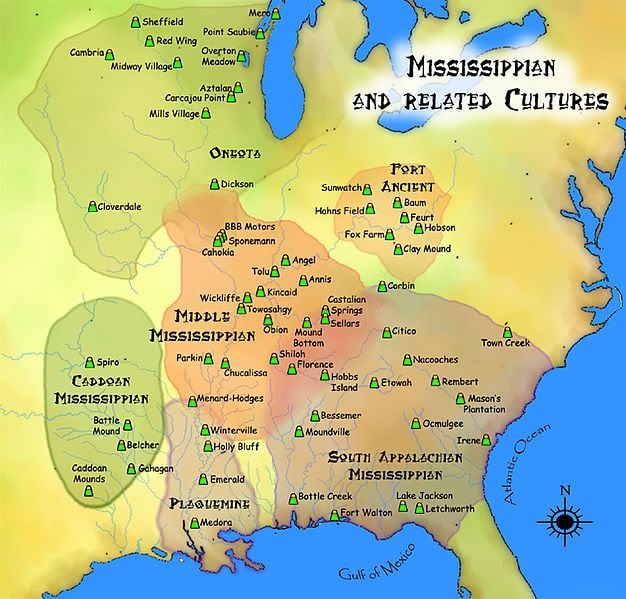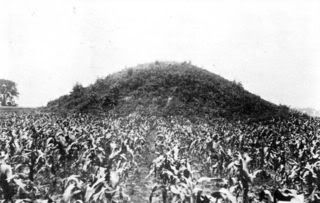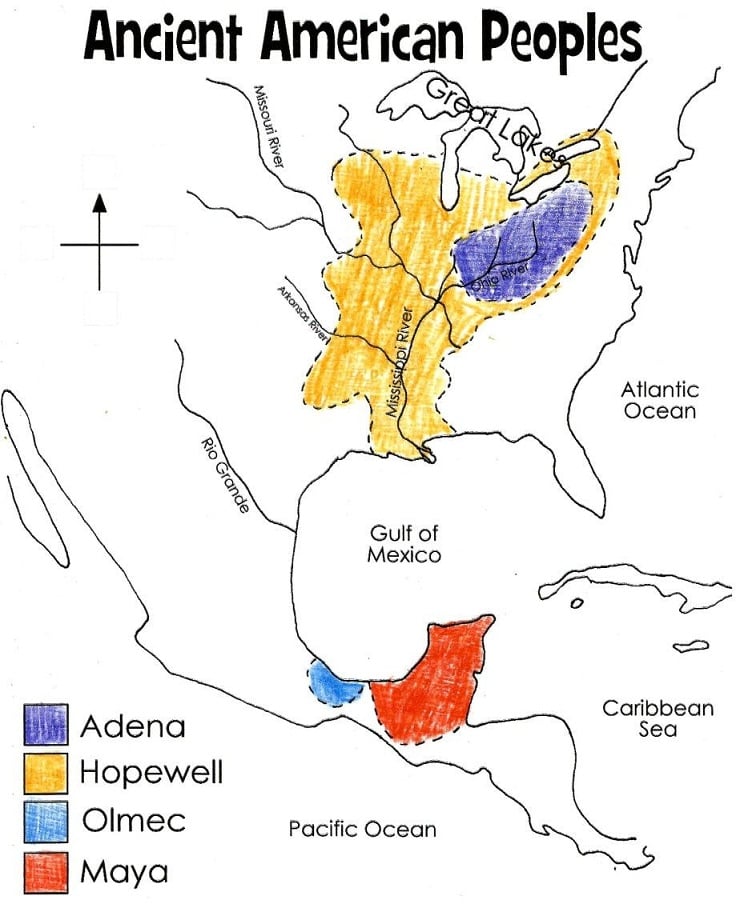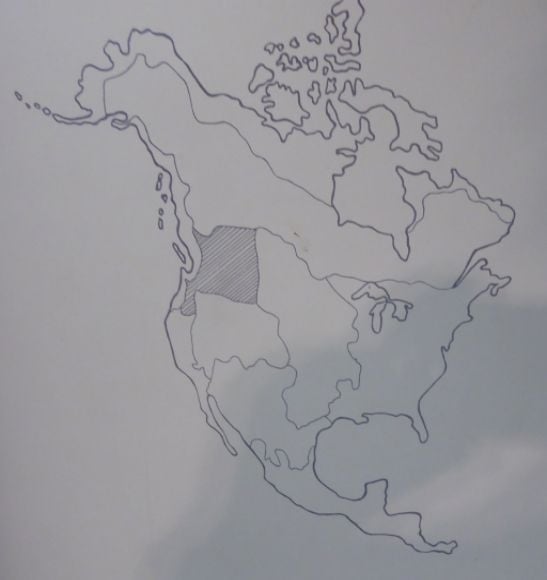Ancient America: Moundville, Alabama
Mississippian is a cultural complex whose hearth appears to be in the American Bottom area near the Mississippi River in Illinois. It is characterized by: tempered clay pottery, square houses, and pyramidal mounds. By a thousand years ago, this complex was moving into Alabama.
About 1050 CE, Mississippian people were building a village at the Moundville Site in west-central Alabama. The village had a well-planned mound-plaza layout and wall-trench architecture. The Moundville residents produced shell-tempered pottery and had some degree of social rank differentiation.

An artist’s rendition of the site is shown above. This is from the Moundville Archaeological Park website.
Moundville was built on a high terrace and was thus immune to flooding. It would eventually grow to contain 32 earthen mounds, 21 of which were truncated pyramids arranged around a single large quadrilateral plaza. Mound A measures 60 by 107 meters and is 6.7 m high; and Mound B measures 59 by 107 meters and is 17.9 m high.

Mound A is shown in the center of the picture above. It is looking from mound J to mound B.
The mounds were built up in stages, somewhat like a layer cake fashion. There would be episodes of destruction in which the structure on top of the mound would be destroyed and burned. Then there would be purification by the burial of the old surface. The continual rebuilding of the mounds was an expressive act and mounds are an aspect of Mississippian expressive culture.
As farmers, the people of Moundville were raising corn, squash, sunflower, chenopod, maygrass, little barley, and beans. About 40% of their calories came from corn. They were also gathering a wide variety of wild foods, including hickory nuts, acorns, persimmon, and grapes.
Meat was obtained by fishing and hunting. While deer was the main animal which they hunted, they also hunted beaver, turkey, rabbit, squirrel, opossum, and turtle. About 25% of their protein came from fish. Upper class people and men tended to eat more meat than other people.
Moundville houses were rectangular wattle-and-daub structures. Two construction techniques were used to build the houses. For some of the houses, the wall posts were individually set in the ground. For other houses, a basin was dug and the walls were set within the basin. In both techniques, flexed poles were used to support the roof.
Moundville was surrounded by numerous very small settlements without mounds, usually called farmsteads. In addition, there were about a dozen single mound sites in the area. These were probably elite residences subordinate to Moundville.
With regard to art, the pottery was often incised with bird effigies. It was not uncommon for a bird to have the head and neck of a heron and the tongue and fanlike tail of a woodpecker. The eagle and the feathered serpent were also common motifs.

Some pottery from the site is shown above.

A bowl from the site is shown above.
About 1200 CE, a palisade was built around the ceremonial center of Moundville and a large number of people moved inside the walls. The population of the center at this time is estimated at 1,000. Moundville was a planned community and grew quickly after the palisade was erected. It eventually sprawled over 370 acres and included 20 mounds.
The Indian people at Moundville were from two different social classes. The elite group made up about five percent of the population and was hereditary. The town was divided into distinct areas for settlement, mounds, and craft production. Craft production continued at Moundville with non-local chert, greenstone, and mica being worked. In addition, craftspeople were working with sheet copper, galena, and various kinds of pigments.

An engraved stone from the site is shown above.
The Indian people at Moundville were practicing head-flattening at this time. Infants were strapped to wooden cradle boards with leather thongs and this resulted in a flattened (elongated) or deformed skull.
About 1250, the population of Moundville began to shrink as the outlying villages increased in size. However, the number of burials within Moundville increased and the town became a necropolis: a large cemetery controlled by the elites who lived on top of the mounds. Moundville residents acted as funeral directors.
By about 1300, the population of the ceremonial center of Moundville declined further. Moundville became an almost vacant ceremonial center occupied primarily by the chiefly elite.
Archaeologists have offered three possible reasons for the depopulation: (1) a conscious decision to empty the center to enhance the sanctity of it, (2) soil depletion and exhaustion of wood resources, and (3) a lessening of the threat of attack with the population dispersing to unfortified towns.
In 1400, two achondropolastic dwarfs-a male who was 50 inches tall and a female who was nearly 47 inches tall-were buried at Moundville. Both had been relatively healthy individuals and were 40-45 years of age at the time of their burial. Both of them showed the flattening to the backs of their skulls, the common result of being strapped to a cradleboard. Both had been functional members of the society and were probably related.
After 1400, many of the mounds at the necropolis of Moundville were abandoned and only a handful of people remained.
Today, Moundville Archaeological Park is a public facility owned by the University of Alabama. It has an onsite museum. Their website describes the museum this way:
Today, the museum combines the latest technology with more than 200 stunning artifacts to describe one of the most significant Native American archaeological sites in the United States. Outside, visitors are greeted by symbols of the Native American culture mounted on enormous wooden heraldic poles. Inside, visitors will find life-size figures displaying the clothing and jewelry of Mississippian cultures, ceremonial feather decorations hand-sewn by Native-American artists, stunning pottery and other artworks placed in display cases that light up when recorded narratives talk about them and three-dimensional, moving depiction of a Native American maker of medicine who appears in a reconstructed earthlodge, taking them on a journey into the afterlife.
website: http://moundville.ua.edu/?page…

The Moundville Museum is shown above. The photo is from their website.

A mound and its barrow pit is shown above. This photo is from the Park’s website.



